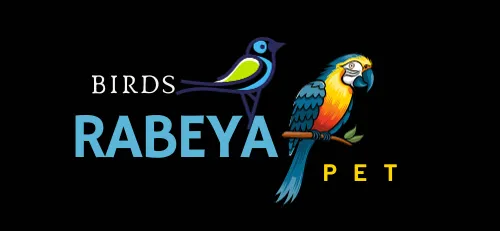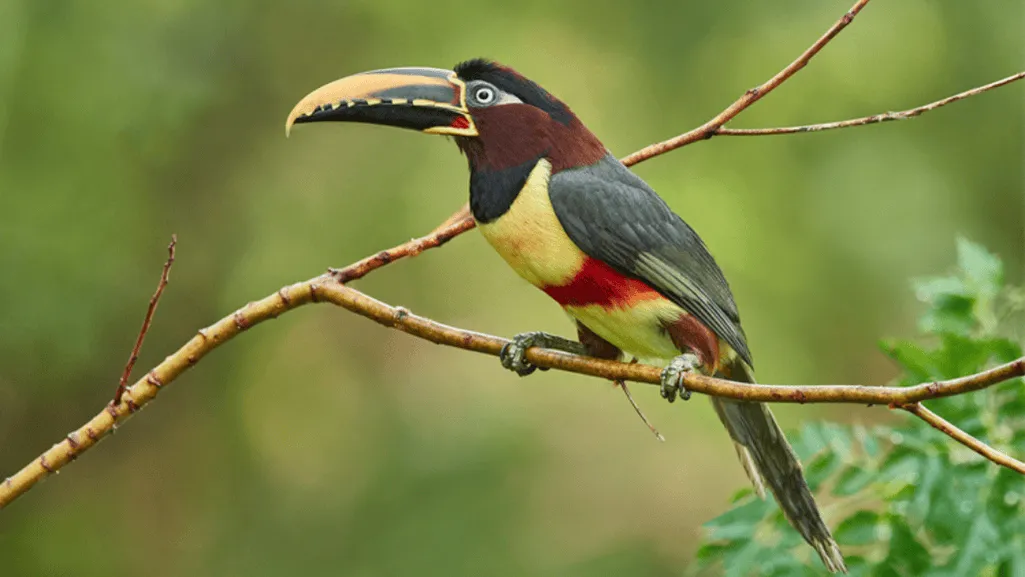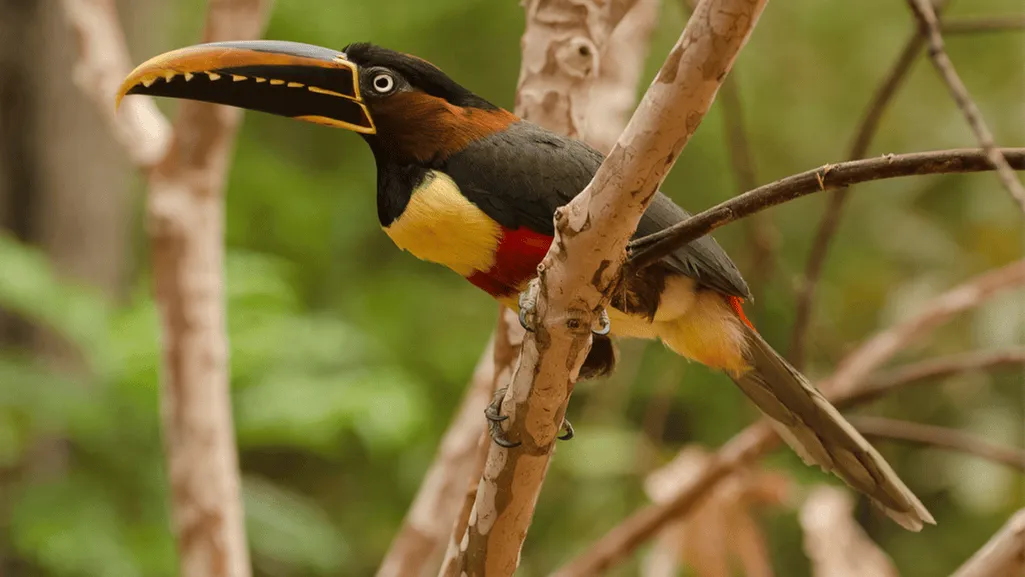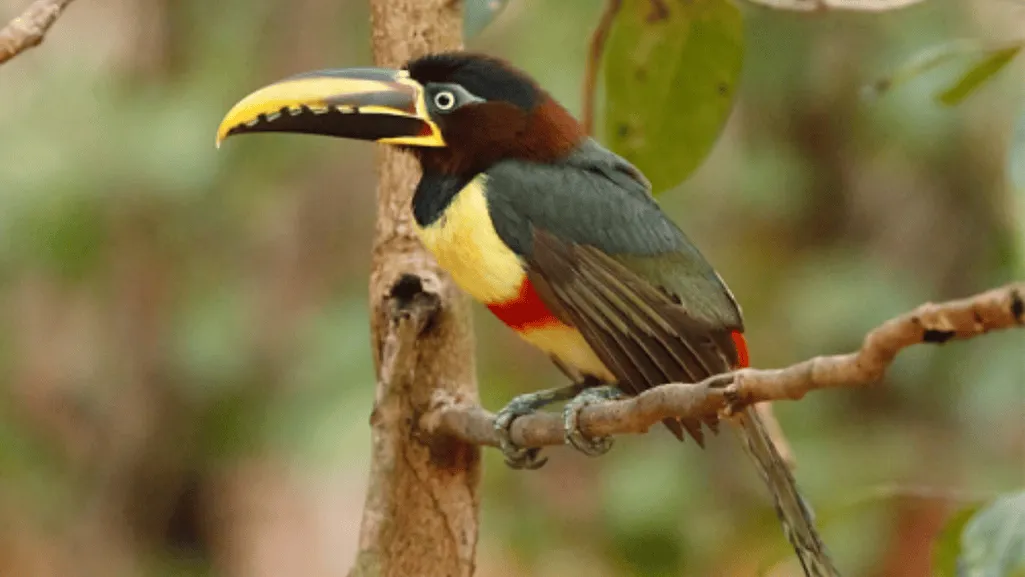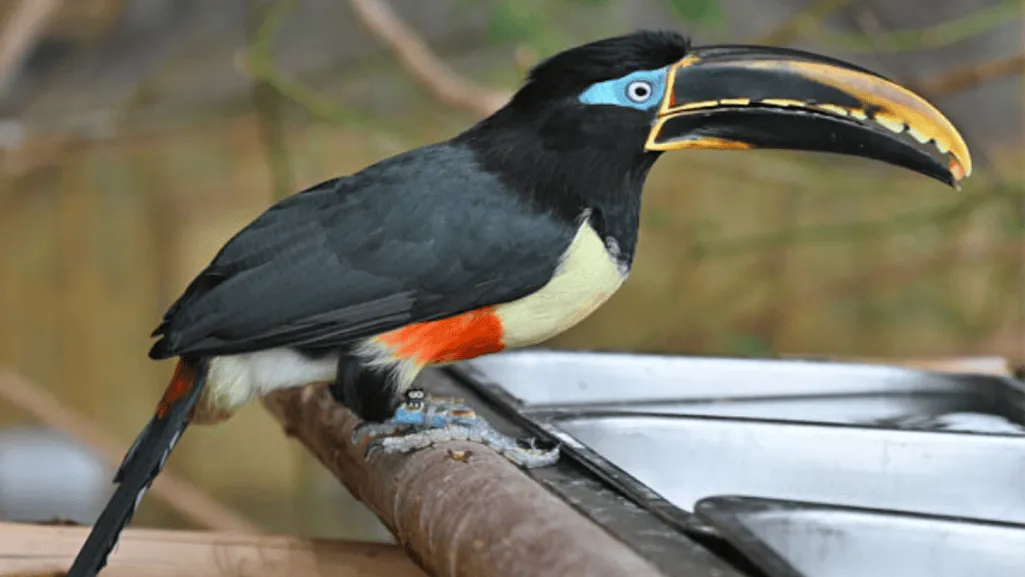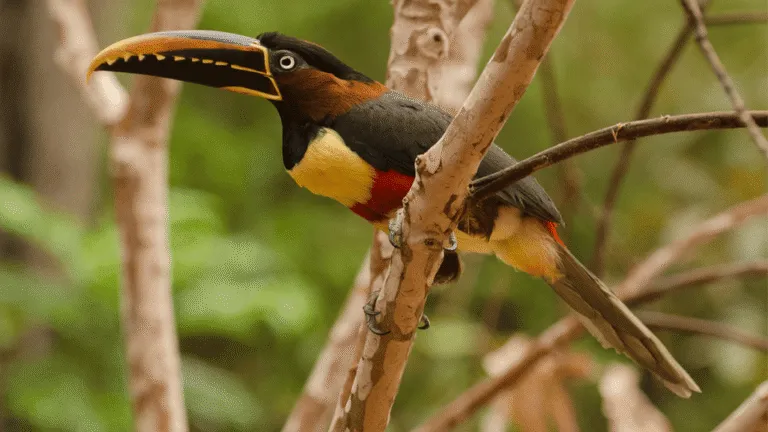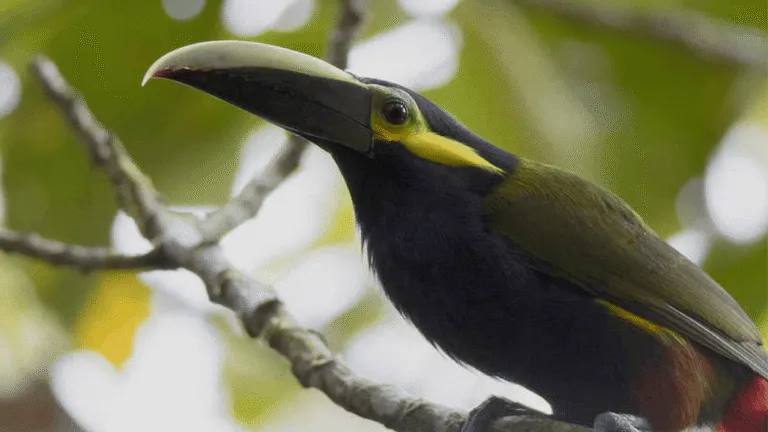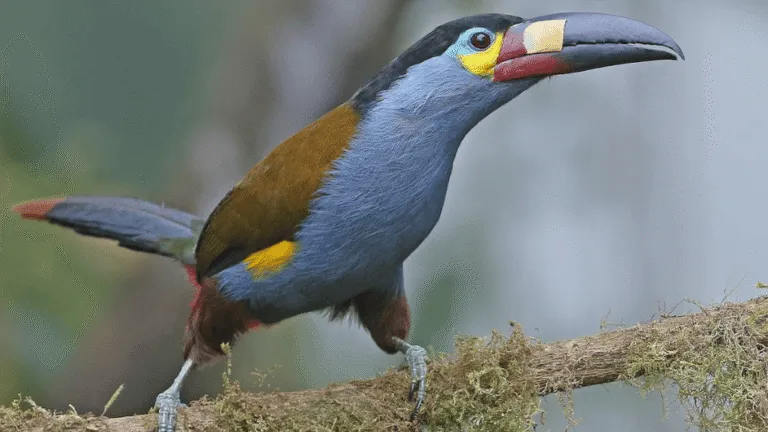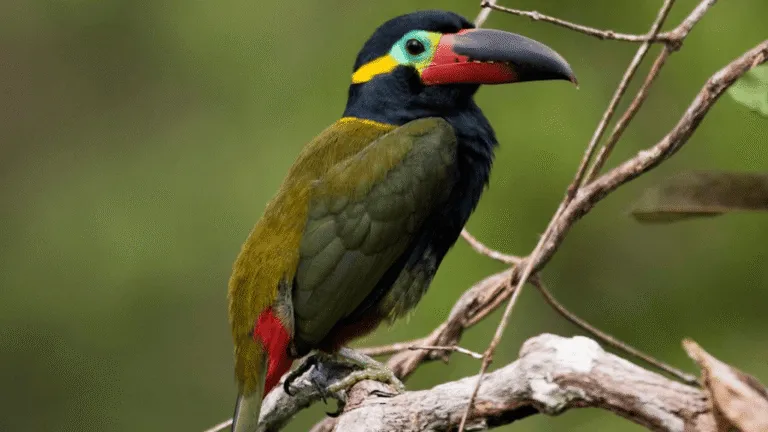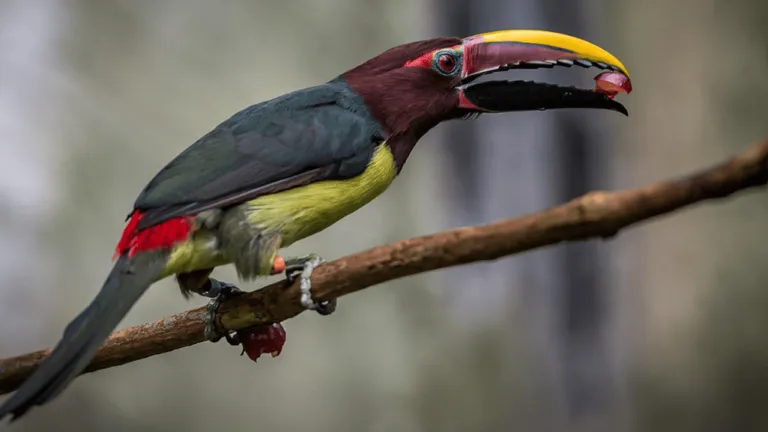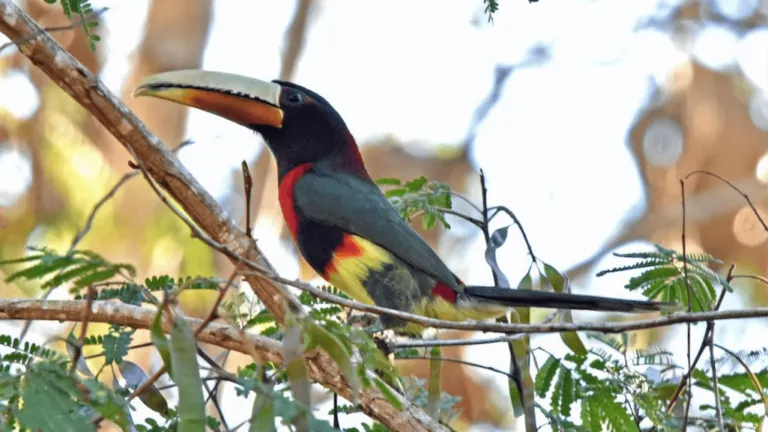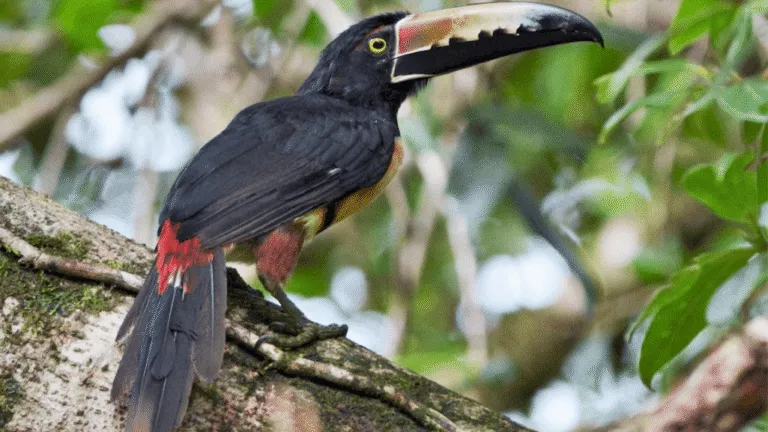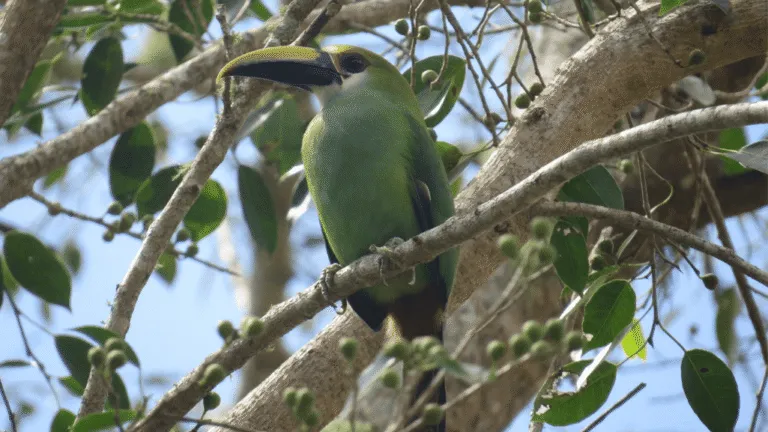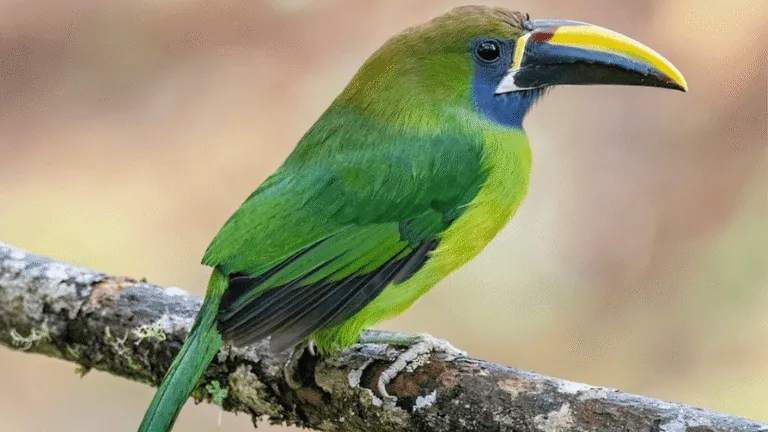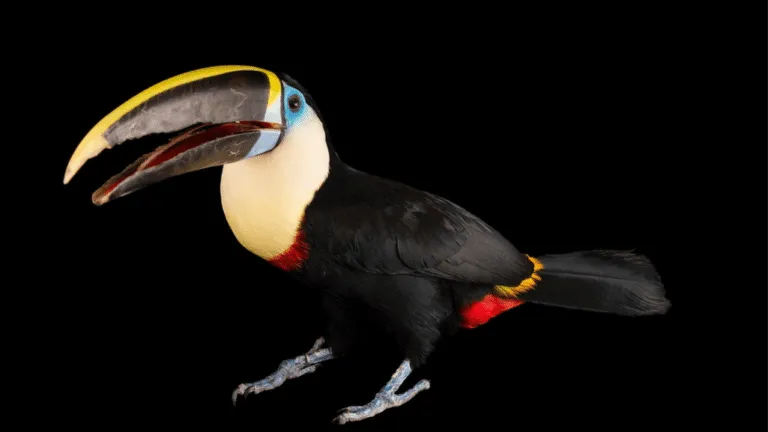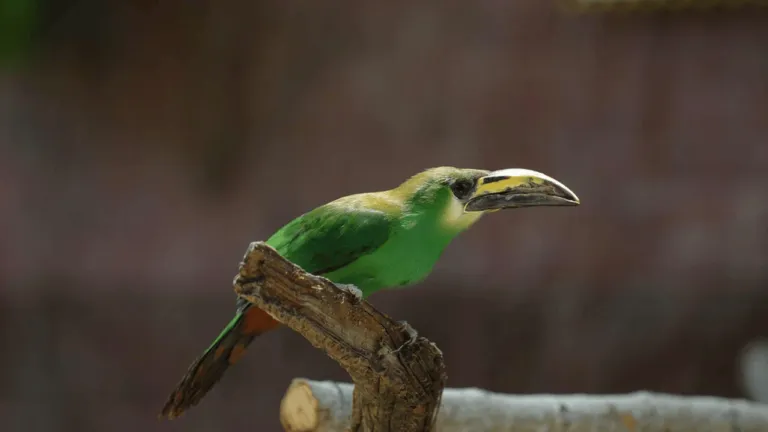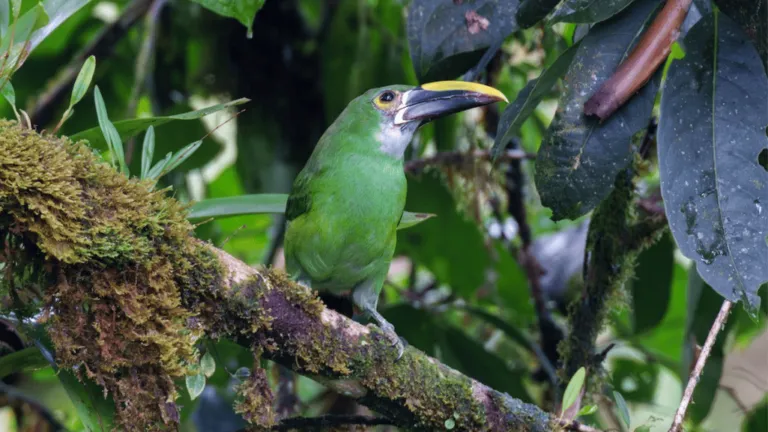Welcome to our comprehensive guide on the Chestnut eared aracari pteroglossus castanotis, a tropical bird species known for its vibrant and colorful appearance. Scientifically known as Pteroglossus castanotis, this medium-sized avian beauty can be found in the lush rainforests of South America. Join us as we delve into the fascinating world of the Chestnut-eared Aracari and explore its unique characteristics, habitat, behavior, and more.
Key Takeaways:
- The Chestnut-eared Aracari, or Pteroglossus castanotis, is a colorful avian species found in South American rainforests.
- With its striking features, including a black head, dark green back and tail, yellow undersides, and a red band and rump, the Chestnut-eared Aracari is a favorite among wildlife photographers.
- These medium-sized birds measure around 18 inches and weigh between 9-11 ounces.
- Chestnut-eared Aracaris are frugivorous, feeding primarily on fruits but also including flowers, nectar, nuts, and small prey in their diet.
- They are highly social birds that live in flocks and breed in nest holes previously made by woodpeckers.
Physical Characteristics of the Chestnut-eared Aracari
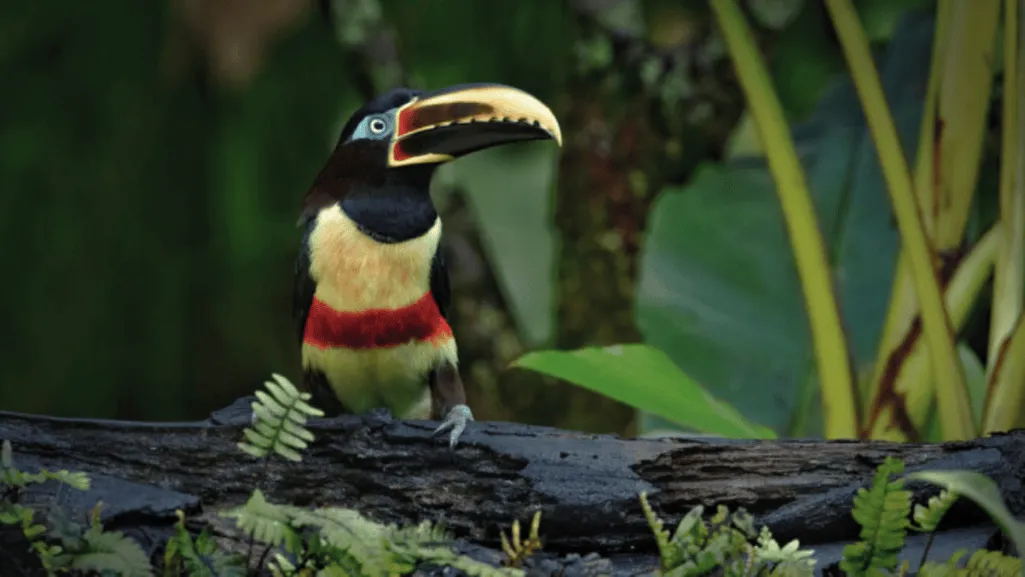 The Chestnut-eared Aracari, scientifically known as Pteroglossus castanotis, is one of the larger aracari species. It measures approximately 18 inches (46 cm) in length and weighs between 9-11 ounces (255-312 gr). This tropical bird possesses a unique and striking appearance that distinguishes it from other species.
The Chestnut-eared Aracari, scientifically known as Pteroglossus castanotis, is one of the larger aracari species. It measures approximately 18 inches (46 cm) in length and weighs between 9-11 ounces (255-312 gr). This tropical bird possesses a unique and striking appearance that distinguishes it from other species.
The Chestnut-eared Aracari has a black head, which contrasts beautifully with its dark green back and tail. Its yellow undersides are adorned with a mesmerizing red band and rump. The most notable feature is its long, dark brown beak, which is characterized by a prominent serrated edge. The upper mandible of the beak showcases a yellow-orange stripe, adding to its distinctive charm.
When observing the Chestnut-eared Aracari, one cannot overlook its whitish eyes, surrounded by grayish-blue facial skin. It has yellowish-green feet and legs, adding a vibrant touch to its overall appearance.
Both male and female Chestnut-eared Aracaris possess similar characteristics. However, females typically have more brown on the head, a shorter bill, and a narrower black area on the lower throat. Despite these slight differences, the overall beauty and allure of the Chestnut-eared Aracari remain consistent.
chestnut eared aracari pteroglossus castanotis
The Chestnut-eared Aracari, scientifically known as Pteroglossus castanotis, primarily inhabits wet forests and savannas, often in close proximity to cultivated land. This tropical bird species has the most widespread range among aracari species and can be found in countries such as Colombia, Peru, Bolivia, Brazil, Paraguay, Ecuador, and Argentina.
These colorful avian creatures are adaptable and can thrive in various habitats, including wet or flooded forests, gallery forests, edges, clearings, and even plantations and woodland patches. Although they are typically found below 600 meters of elevation, some Chestnut-eared Aracaris can be observed at higher altitudes of 1000-1300 meters along the Andean ranges.
To give you a clear idea of the Chestnut-eared Aracari’s habitat and range, here’s a detailed table:
| Habitats | Countries |
|---|---|
| Wet forests and savannas | Colombia, Peru, Bolivia, Brazil, Paraguay, Ecuador, Argentina |
| Gallery forests | |
| Edges | |
| Clearings | |
| Plantations | |
| Woodland patches |
Behavior and Communication of the Chestnut-eared Aracari
The Chestnut-eared Aracari, also known as Pteroglossus castanotis, is a highly social bird that exhibits various behaviors and vocalizations for communication. These colorful avians live in flocks of over ten individuals, displaying their vibrant plumage and engaging in specific behaviors during the breeding season. They raise their rump feathers and showcase their colorful, patterned bills as part of their courtship rituals.
One notable aspect of the Chestnut-eared Aracari’s behavior is its vocal nature. These birds communicate through a range of sounds, utilizing their unique and distinctive calls. Their vocalizations include high-pitched, piercing calls like “sneeep” and longer, melodious sounds such as “psheee-eep.” They also emit a single “tekk” call, a low “eeee-eee,” and a four whistled “weet” note combination. These vocalizations are often uttered in irregular series, accompanied by twitching, tail cocking, and head movements.
The Chestnut-eared Aracari’s communication through vocalizations serves various purposes. It helps them communicate within their flock, signal their presence to other individuals, and establish territorial boundaries. These vocalizations play a crucial role in maintaining social cohesion and facilitating communication among the Chestnut-eared Aracaris.
Behavior and Communication Overview:
 Highly social birds living in flocks of over ten individuals
Highly social birds living in flocks of over ten individuals- Display behaviors during the breeding season, such as raising rump feathers and showcasing patterned bills
- Communicate through a range of vocalizations
- Vocalizations include high-pitched, piercing calls and melodious sounds
- Twitching, tail cocking, and head movements accompany vocalizations
- Communication serves purposes such as flock interaction and territorial signaling
Below is a table summarizing the behavior and communication traits of the Chestnut-eared Aracari:
| Behavior Traits | Communication Mechanisms |
|---|---|
| Highly social, living in flocks | Vocalizations with distinct sounds |
| Behaviors displayed during breeding season | Piercing, high-pitched calls |
| Twitching, head movements | Melodious sounds for communication |
| Distinctive calls like “sneeep,” “psheee-eep,” “tekk,” “eeee-eee,” and “weet” |
Conclusion
The Chestnut-eared Aracari, also known as Pteroglossus castanotis, is a captivating bird species found in the tropical rainforests of South America. With its stunning appearance and vibrant colors, this avian beauty attracts the attention of bird enthusiasts, wildlife photographers, and researchers in the field of ornithology.
Its unique features, including the chestnut coloring around the throat and ears, make it easily recognizable. The Chestnut-eared Aracari plays an important role in rainforest ecosystems as a frugivorous species, aiding in seed dispersal and contributing to the overall health and biodiversity of the ecosystem.
However, like many other rainforest species, the Chestnut-eared Aracari faces threats from habitat loss due to deforestation and human activities. Conservation efforts are crucial to protect these magnificent birds and their habitats. Through ongoing research, education, and sustainable practices, we can ensure the survival and thriving of the Chestnut-eared Aracari and the rich biodiversity of our rainforests.
FAQ
What is the scientific name of the Chestnut-eared Aracari?
The scientific name of the Chestnut-eared Aracari is Pteroglossus castanotis.
Where can the Chestnut-eared Aracari be found?
The Chestnut-eared Aracari is primarily found in South America, specifically in countries like Colombia, Peru, Bolivia, Brazil, Paraguay, Ecuador, and Argentina.
What is the size and weight of the Chestnut-eared Aracari?
The Chestnut-eared Aracari measures around 18 inches (46 cm) in length and weighs between 9-11 ounces (255-312 gr).
What is the diet of the Chestnut-eared Aracari?
The Chestnut-eared Aracari is a frugivorous bird, meaning it primarily feeds on fruits. However, its diet may also include flowers, nectar, nuts, and animal prey.
How do Chestnut-eared Aracaris communicate?
Chestnut-eared Aracaris communicate through a range of vocalizations, including high-pitched calls and song-like sounds. They also display behaviors such as raising their rump feathers and showcasing their colorful bills during the breeding season.
What is the conservation status of the Chestnut-eared Aracari?
The Chestnut-eared Aracari is classified as Least Concern on the IUCN Red List and is listed in CITES Appendix III. However, like many other rainforest species, it faces threats from habitat loss and human activities.

